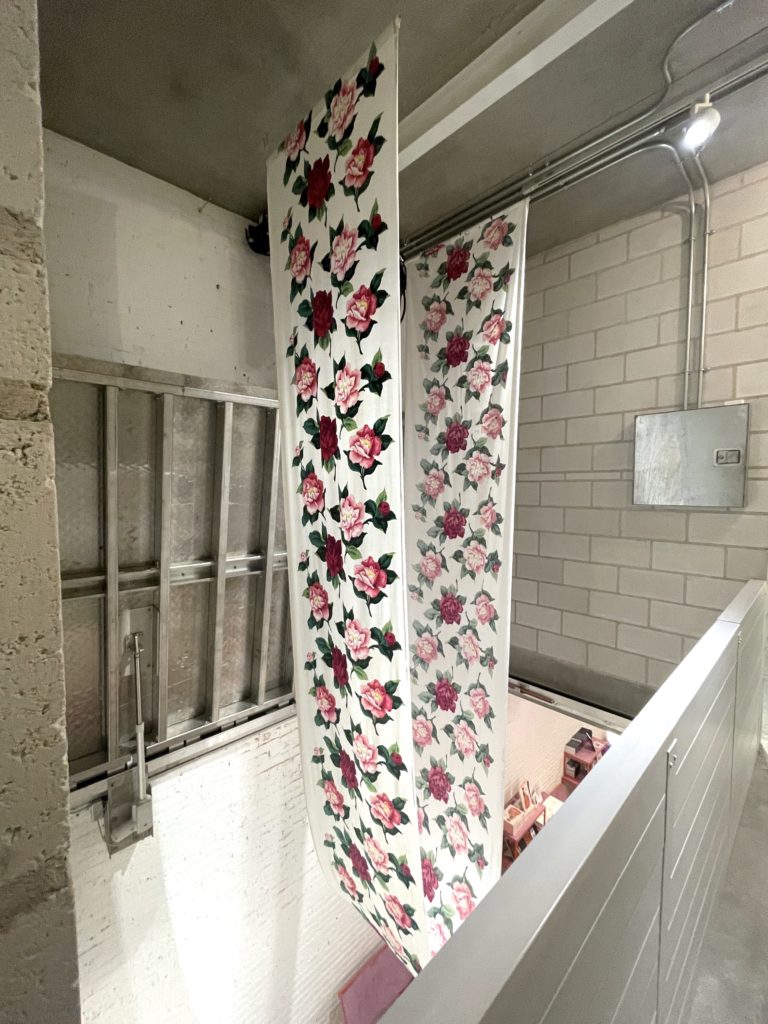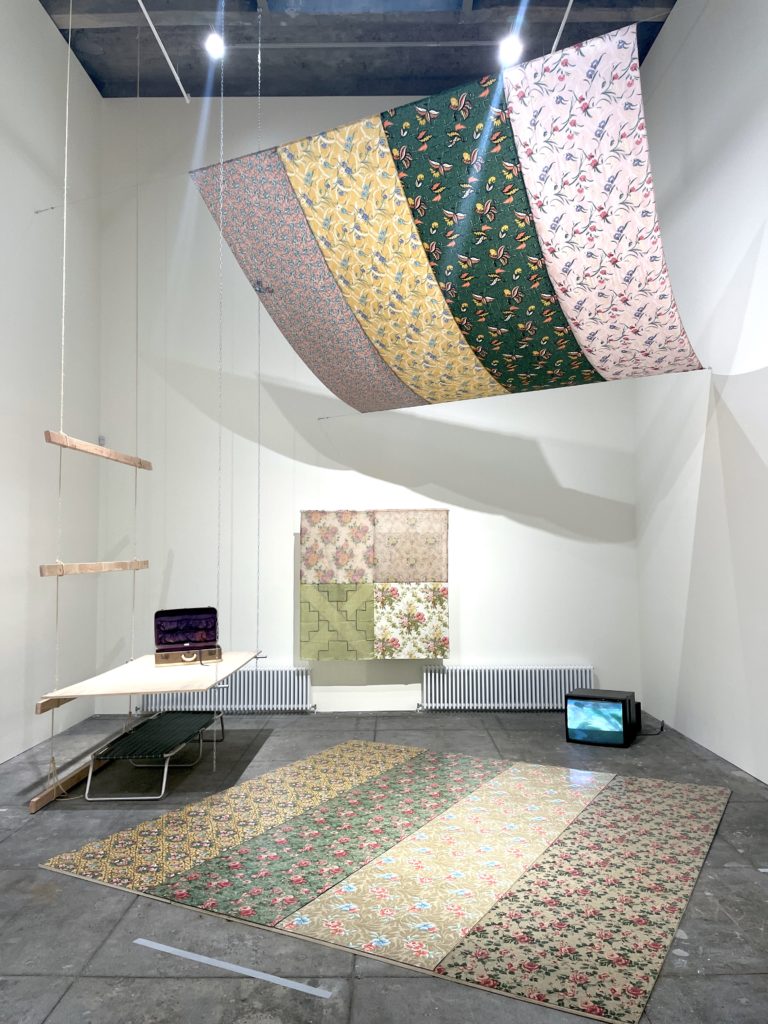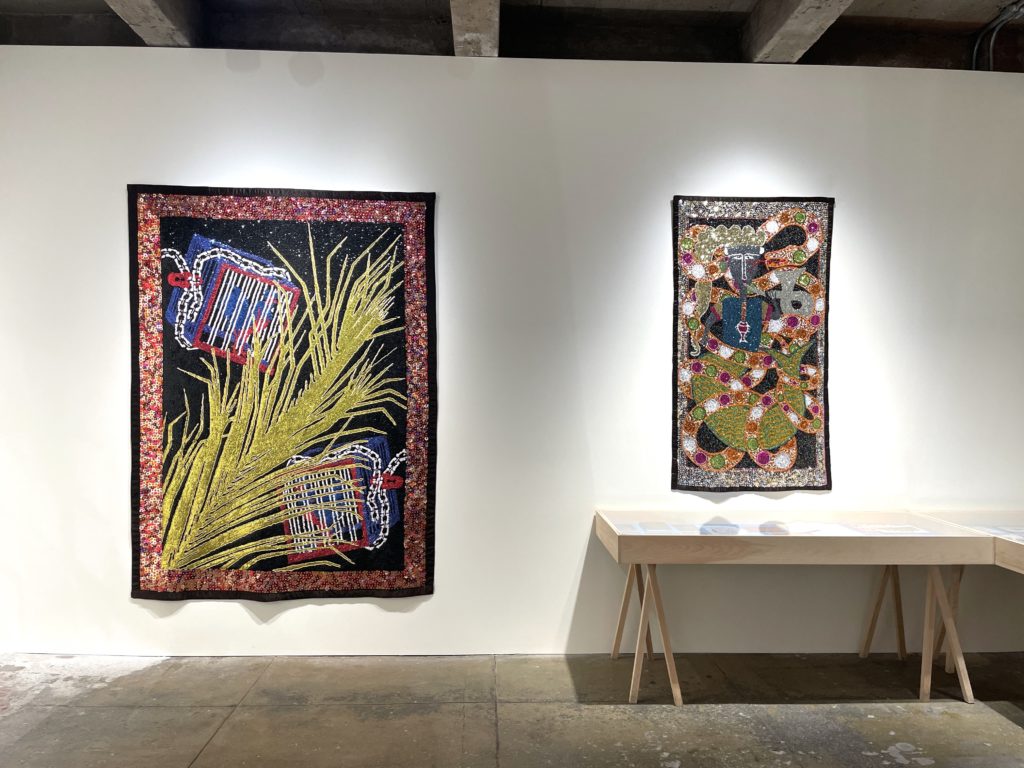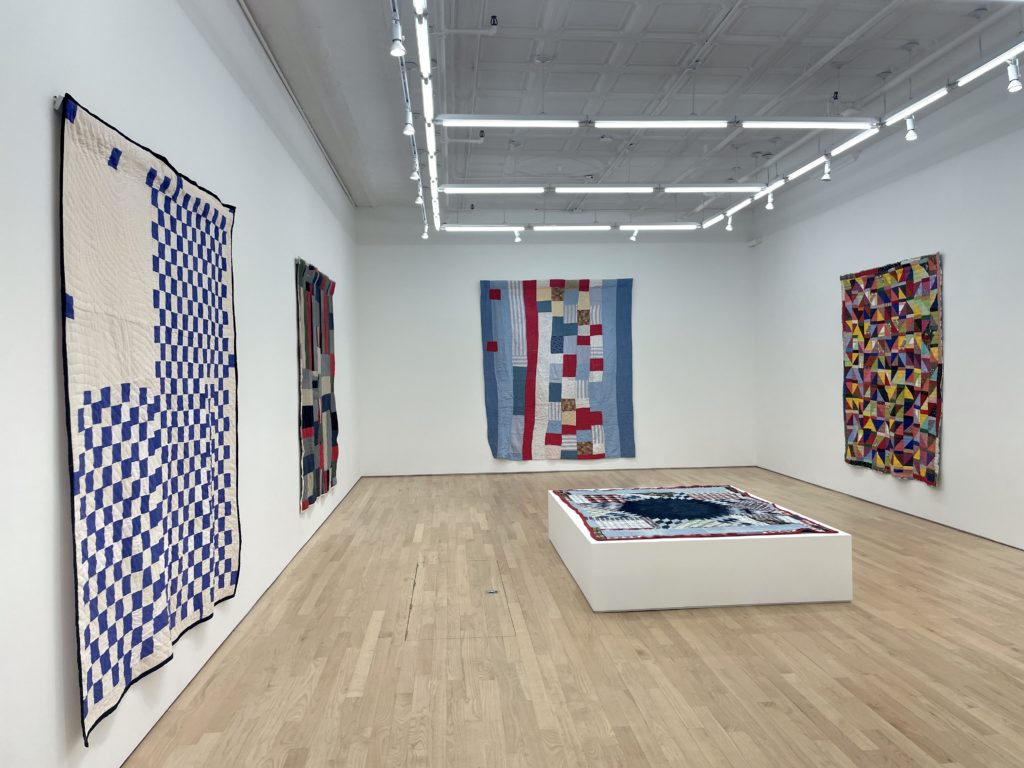2024 December Fiber Picks
Tina Girouard: SIGN-IN
September 21, 2024-January 12, 2025
Center for Art, Research and Alliances (CARA) // 225 West 13th Street NY, NY 10011
Tina Girouard’s (1946-2020) solo exhibition SIGN-IN at Center for Art, Research and Alliances (CARA) was one of the more surprising exhibitions I’ve been to this year—namely because I’d never heard of her, and now I cannot get her out of my head.
“From the 1970s until her death, Girouard was a dedicated experimental artist, collaborator, and art worker, whose practice across mediums deeply informed feminist art, craft, performance, and video of the last century.” Born and raised in Louisiana, Tina Girouard was a groundbreaking avant-garde artist who, during her relatively short time living in New York City from 1969 to 1979/80, played a seminal role in many current art programs that are considered establishment. Alongside Gordon Matta-Clark, Carol Goodden, and Suzanne Harris, Girouard was a founding member of FOOD, the celebrated SoHO restaurant-art project that operated (roughly) from 1971 to 1974. In addition, she was a formative artist for NYC arts organizations PS1 Contemporary Art Center, The Kitchen, Creative Time, The Clocktower Gallery, and 112 Greene Street (which, in 1979, became White Columns); Philadelphia’s Fabric Workshop; and the Anarchitecture Group and Pattern and Decoration movements. She was also formatively linked to the Minimalist and Post-Minimalist art movements, Video art, and Maintenance art.

Center for Art, Research and Alliances (CARA). Photo Credit: Julie Schumacher
The piece Solomon’s Lot Fabrics hangs from the stairwell down into the entryway of the show. The work, a long bolt of decorative floral 1940s silk gifted to the artist by her mother-in-law, was used in a number of works, including Camoplage, Girouard’s 1977 piece in Documenta 6 in Kassel, Germany. Alongside other ephemera, photos from that performance exist in a display case in the adjacent gallery showing Girouard interacting with the panel—dragging it, washing it, draping it, wrapping herself, and napping on it. The work is an example of how Girouard’s work crosses over multiple genres—here, namely performance and Post-Minimalism. It is noteworthy to point out how Girouard’s commitment to decorative fabrics overtly challenged Minimalism’s connections of hypermasculinity and anti-ornamentation. Girouard often hung bolts of fabric to indicate the connected distance and space between people and said fabrics “were ‘bathed in the sacred,’ a reminder of the spiritual energy that is infused in a material through its repeated use and care.”

The large-scale installation at CARA, Air Space Stage (1972), was first installed at shown at 112 Green Street, an important experimental performance space where Girouard was a founding member and, along with peers and friends like Gordon Matta-Clark, Vito Acconci, Richard Serra, Chris Burden, and Laurie Anderson, would exhibit and perform there. The 4-panels of decorative, floral fabrics are tented gracefully to create “‘a space-within-a-space’ that shifted according to the light, time of day, and weather conditions.” The linoleum slats below mirror back the ornamental motifs of the sheeting, creating an unapologetic feminine space. Girouard’s use of decorative materials like fabrics, wallpapers, and linoleums was intended as an overt institutional critique of the perceptions of worth in relation to gender and artistic and domestic labor.

Shortly after a fire destroyed her home, Girouard moved back to Louisiana and continued making art throughout her life. In the early 1990s, she visited Haiti and, for five years, kept a studio in Port-au-Prince and often collaborated with Haitian artist Antoine Oleyant. Works she made during this time are the sequenced pieces on the first floor, reflecting Girouard’s affinity for textiles and pictograms with Oleyant’s use of secular and sacred Vodou iconography in traditional sequenced Haitian tapestries.
Girouard’s use of iconography is fascinating in both comparison and contrast to the floral and decorative patterns she employed. Both directions are motifs that communicate—one overtly, the other in perception. Like her performances, they are coded and take time to read—and may be read wrong or misunderstood. Who knows? Is it important? What is important is that they, like her installations and actions in video and performance, say something—and then ask you to second guess.
Curated by Rivers Founding Director and Chief Curator, Dr. Andrea Andersson, and Rivers Curator, Dr. Jordan Amirkhani, in conversation with Manuela Moscoso, CARA’s Executive Director and Chief Curator. SIGN-IN was researched and organized by Rivers Institute for Contemporary Art & Thought, New Orleans. SIGN-IN at CARA was produced by Agustin Schang, with curatorial assistance by Marian Chudnovsky.
Gee’s Bend: My Way Today
November 21 - January 4, 2025
Nicelle Beauchene Gallery // 7 Franklin Place
New York, NY 10013

I must confess that I was so excited about this show that I showed up at its doors not once but twice before it had even opened. Third time was a charm! The quilts of Gee’s Bend are museum works, and in the intimate setting of Nicelle Beauchene, one can get close and linger to examine the works’ stitchings without rush.
The works made in My Way: Gee’s Bend Today harken from Wilcox County, Alabama, in a remote region known as Gee’s Bend. Most residents and artists are descendants of enslaved laborers and sharecroppers from the region and nearby, and for generations, have been using scraps and clothing to make quilts bold and uniquely stylistic. The works incorporate both traditional templates like Flying Geese, Housetop, and Log Cabin, and “My Way,” which refers stylistically “to a quilt that embodies a quilter’s individual artistic vision and relationship to the fabrics at hand, rather than adhering to a guide or template. All works, however, show an asymmetry in needlework, colorwork, or composition that is nothing short of masterful. The improvisational geometry and piecing and the personality in the materiality of both vibrant and faded cottons, velvets, denims, and curduroys create narratives and rhythms that transcend the utility of the works. My Way exhibits 12 quilts by contemporary and living Gee’s Bend artists: Lillie B Witherspoon Jackson, Marlene Bennett Jones, Mary McCarthy, Lue Ida McCloud, Caster Pettway, Essie Bendolph Pettway, Loretta Pettway Bennett, Mary M. Pettway, Rita Mae Pettway, Stella Pettway, Creola Ramsey, The Hall Sisters (Mary Hall, Doris Mooney, and Elaine Spencer), and Andrea Williams. “The exhibition highlights the shared creative impulses that have passed through strong networks and communities of quilters, instilling a confident approach in this current generation. […] This new work celebrates the diverse, experimental, and interpretive pattern-making that is still very much alive today.”
Faig Ahmed (Azerbaijan): THE KNOT
November 22 - January 6, 2025
Sapar Contemporary // 9 North Moore Street, New York, NY 10013

Faig Ahmed is a contemporary Azerbaijanian artist known not only for textiles but also his range of mediums—his work “reimagines ancient crafts and creates new visual boundaries by deconstructing traditions and stereotypes.” This was my experience when I held up my phone to take a photo of the large, traditional-looking tapestry hanging in the Sapar Contemporary corridor, and a secret message was revealed: YOU ARE SACRED. Cultural tradition, historical legacy, and formal technique combined with a twist emphasize Ahmed’s message: “Value lies not in the object itself but in the human hands that created it.” Elsewhere in the show appear a handful of works—skillfully and beautifully crafted weavings and carpets with traditional patterns and motifs, but each work also encounters a “glitch”—glitch being a decisively accurate word, because the traditional motifs and rectangular structures of the carpets and weavings melt, pull, pixilate, warp, knot, and fade as if experiencing a computer virus. To experience this glitch in motifs and a medium associated with centuries of tradition creates a sense of unbalance or vertigo that highlights the “mathematical” precision and humanity—the “narratives, poetry, architecture and art”—embedded within the medium of tapestry. Breaking away from the binary between craft and art object, Ahmed’s conceptual unraveling of the carpet challenges the viewer to reflect on the carpet as a medium that carries its own relationship to time, space, language, and perceptive experience.”
Sam Branden: DOGBANE
October 25 - December 20, 2024
Chart Gallery // 74 Franklin St, New York, NY 10013
In DOGBANE, New York artist Sam Branden examines the dichotomy of urban life and culture and the nature that influenced his growing up in the Midwest. Streetwear, fashion, and graffiti culture exist in layers in these hand-sewn works, primarily spandex, stacked and stretched to the extreme, screening but showing compositions of found detritus, from papered advertisement and canvas to orphaned gloves and clothing logos, excavated from the artist’s neighborhood. The jagged protrusions of the raw spandex and the layers of these pieces network like cartography, “crisscrossing a city’s street map.” But the natural give of spandex collapses into soft edges, and the edginess, like the edginess of a city, gives way to a more organic softness, possibly a reference to the artists' roots. This can especially be experienced in his site-specific installation Centipede (2024), which, neon and organic, sprawls up from one of the gallery’s corners like webs or as if branches growing from a tree.